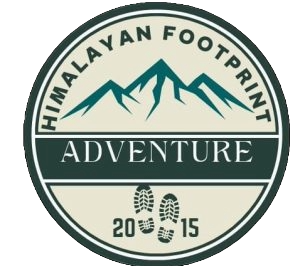Kanchenjunga Trek
The Kanchenjunga Trek in Nepal is a captivating adventure around the third-highest mountain globally, Mount Kanchenjunga. This trek offers diverse landscapes, from lush forests to alpine meadows, showcasing stunning views of the Himalayas. Traversing remote trails, trekkers experience the unique culture of local communities like the Limbu and Rai. With its challenging terrain and pristine beauty, the Kanchenjunga Trek provides a less crowded but rewarding journey for those seeking a truly off-the-beaten-path Himalayan experience. The trek’s appeal lies in its unspoiled natural charm and cultural authenticity, making it an extraordinary and memorable adventure for trekking enthusiasts.
The Kanchenjunga Trek is a remote trek in Nepal that lies in the eastern part of the country. Mount Kanchenjunga, the third-highest peak in the world, is standing as the least explored and the least known . The trek is a high-altitude trek that allows you to experience the untouched and unspoiled beauty of the highland Himalayas . The trek takes about 2 weeks to 3 weeks depending on the itinerary and is best done from March to May or mid-September to December . The trek commences from Kathmandu and takes you through lush forests, pretty villages, and majestic Himalayas and waterfalls. The Kanchenjunga base camp is the best choice for adventure lovers. The trek is challenging and requires a good level of fitness and some trekking experience. The trail’s main attraction is the Kanchenjunga Conservation Area, which is spreading in 2,035 SQ Km and has diverse wildlife, including the snow leopard, Himalayan black bear, musk deer, and red panda. The site also offers an infinite variety of landscapes and cultures and provides panoramic views of the world’s highest Himalayas, like Everest . The best view of Mount Lhotse, Makalu, and Kanchenjunga helps to make the trek rewarding.
Day 1: Fly from Kathmandu to Bhadrapur and drive to Ilam. The drive takes around 5 hours.
Day 2: Drive from Ilam to Taplejung. The drive takes around 5 hours.
Day 3: Trek from Taplejung to Chirwa. The trek takes around 6 hours.
Day 4: Trek from Chirwa to Lelep.
Day 5: Trek from Lelep to Amjilosa.
Day 6: Trek from Amjilosa to Gyabla.
Day 7: Trek from Gyabla to Ghunsa.
Day 8: Acclimatization day at Ghunsa.
Day 9: Trek from Ghunsa to Kambachen.
Day 10: Trek from Kambachen to Lhonak.
Day 11: Trek from Lhonak to Pangpema.
Day 12: Acclimatization day at Pangpema.
Day 13: Trek from Pangpema to Kambachen.
Day 14: Trek from Kambachen to Ghunsa.
Day 15: Trek from Ghunsa to Sele La.
Day 16: Trek from Sele La to Cheram.
Day 17: Trek from Cheram to Ramche.
Day 18: Trek from Ramche to Tortong.
Day 19: Trek from Tortong to Yamphudin.
Day 20: Trek from Yamphudin to Khebang.
Day 21: Trek from Khebang to Thorpu.
Day 22: Drive from Thorpu to Bhadrapur and fly back to Kathmandu
Included
- Experienced Guide
- Porter
- 3 Times a Meal According the choice of Guest
- 3 Times Hot Drink
- Seasonal Fruits
- All Required Equipment’s
- All the Transportation Fee During Programmer
- Airport Pick Up & Drop
- All the Accommodation During Trek
- Sight Seeing (UNESCO World Heritage Sites)
- Accommodation In Kathmandu (Tourist Standard Hotel/Star Hotel)
- First Aid Service
- Trekking Gears If Required (Crampon, Ice-Axe , Rope, Oxygen Cylinder, Sleeping Bag, Hot Water Bag)
- Staff Insurance (Guide, Ass Guide, Porter, Cook, Ass Cook)
- Food & Accommodation For Field Staffs
- Staff Equipment
Not Included
- Tips For Nepali Field Staffs (Tipping is the tradition of tourism in Nepal, every trekkers Expect some tips from the clients at the end of program. Normally we recommend 15-25% tips to guide & 10-15% tips to other field Staffs)
- International Flight
- Travel Insurance & Visa fees
- All the Beverages
- Extra Expenses (Personal Shopping, Personal Transportation, Extra Activities if it is not in the program)
Clothing:
- Outer Shell Jacket: Waterproof and windproof jacket for protection against the elements.
- Hiking Pants: Comfortable, moisture-wicking pants that are easy to move in.
- Rain Pants: Waterproof pants for rain and wet conditions.
- Gloves: Insulated gloves for warmth and protection.
- Hat: Warm hat to cover your head and ears.
Footwear:
- Hiking Boots: Sturdy, comfortable hiking boots with ankle support.
- Socks: Moisture-wicking and warm socks. Consider bringing a few pairs.
Accessories:
- Backpack: Comfortable daypack to carry your essentials.
- Sunglasses: UV-protective sunglasses with good coverage.
- Sunscreen: High SPF sunscreen to protect your skin from high-altitude sun.
- Lip Balm: With SPF to prevent chapped lips.
- Headlamp: Essential for any early morning or late evening activities.
Sleeping Gear:
- Sleeping Bag: Warm and suitable for the expected temperatures.
Hydration and Nutrition:
- Water Bottles: Carry water bottles to stay hydrated.
- Snacks: Energy bars, trail mix, and other high-energy snacks.
- Water Purification: Water purification tablets or a filtration system.
Miscellaneous:
- First Aid Kit: Including basic medications, bandages, blister treatment, etc.
- Personal Identification: Passport, permits, and any other necessary documents.
- Camera: If you want to capture the breathtaking views.
- Power Bank: To keep your electronics charged.
- Toiletries: Toilet paper, hand sanitizer, and other personal hygiene items.
Optional Gear:
- Trekking Gear Rental: You can rent some equipment in Nepal, such as sleeping bags and trekking poles.
- Portable Altitude Chamber (PAC): For altitude-related emergencies, if you’re concerned about altitude sickness.
